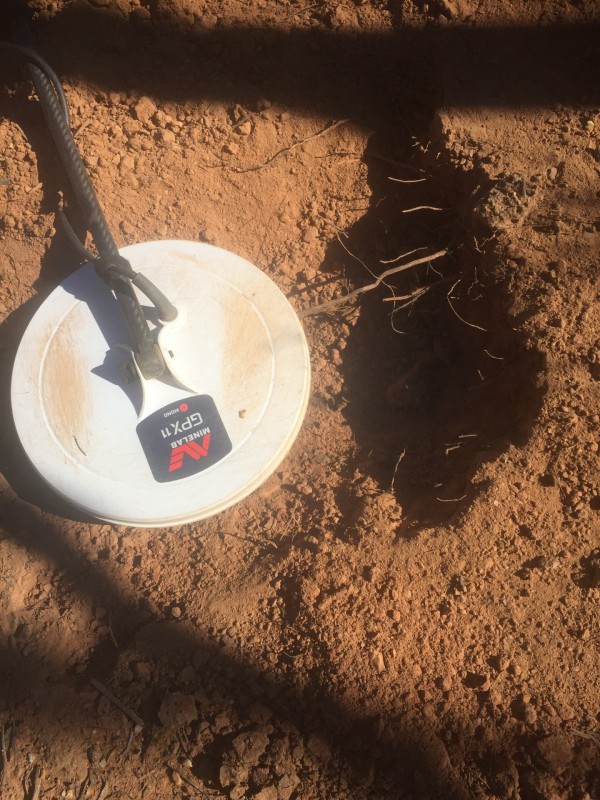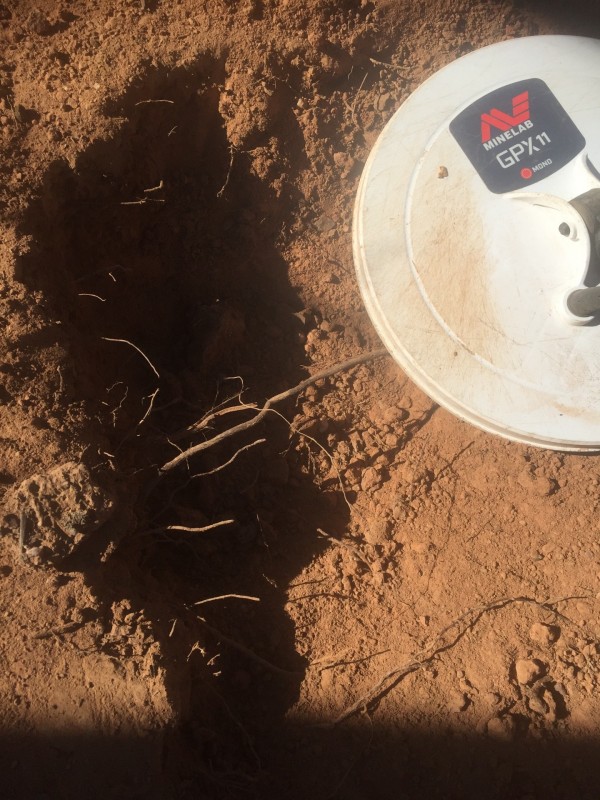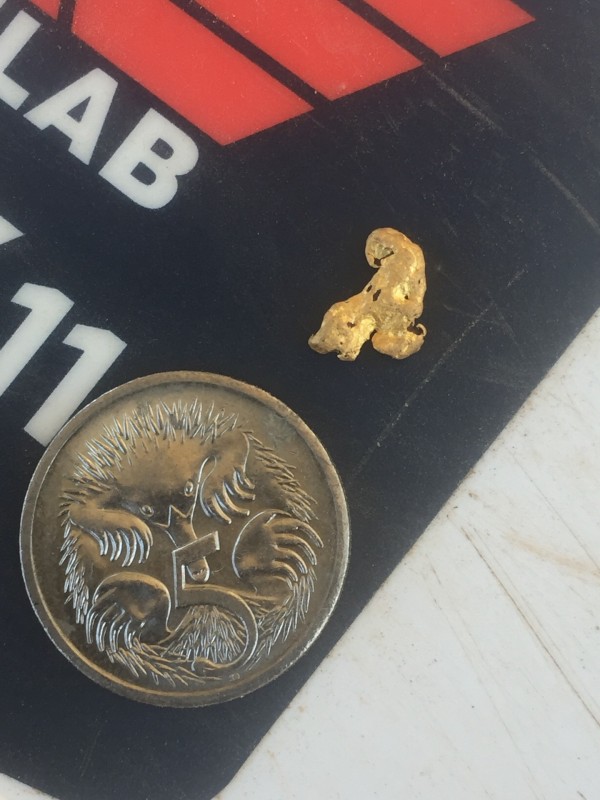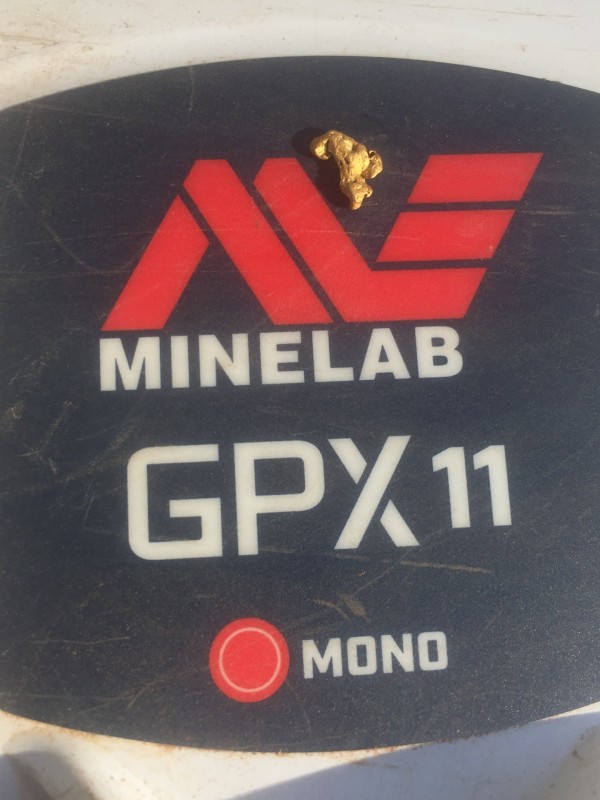Search the Community
Showing results for tags 'minelab gpx'.
-
I haven't seen very much conversation about the comparison between these two detectors now that the GPX 6000 is creeping into the SDC 2300's territory. So far, the GPX gets both smaller and deeper gold. Has anyone other observations?
-
I'm checking both out. Need some input by others.
-
I've been reading about DD and mono coils for the GPX. I'm confused
-
Hi all. A fella I know, who we will call Jim, has been given (yes GIVEN!!) a GPX 5000 and has asked me for help to set it up. I think it is a year or so old but never been used as the original owner is unwell. I recently helped my sister's boyfriend who had issues with his 4500 so had roughly read the manual. The 4500 actually had a speaker issue as well so although we got it working OK the Threshold was still quiet. My less than expert diagnosis (from a bit of research here and PA Forum) was that his curly cord might be a bit defective and it isn't boosting the audio to the speaker. Anyway, I stopped around the other night and helped the bloke with the 5000 as best as I could having roughly ready the manual again. Now this bloke is technology illiterate and is not someone who is going to sit down and read or understand the 112 pages of the Minelab GPX 5000 manual. I did give him a print out of Steve H's GPX 5000 bit from the Detector Review area of this forum but even that is beyond him (the Timings/Mineralisation diagram for example). So, I have set the 5000 up to a point where the Threshold is humming nicely and we were finding targets in the bush quite easily. With the 5000 are an 11" mono Commander and I think it was a 17"X11" mono Commander. No DD which I thought was unusual but maybe they came in a package without a DD? The original owner might still have a few bits and pieces too as it seemed there were a few things missing. Have written up what I think are the absolute essentials for Jim to know about and change if he feels confident to do so. There are sooooo many controls on a 5000 that I feel like a 5 year old is in control of the cabin of a jumbo jet! The following is 112 pages condensed down to 2 😳 Wondering if those with the knowledge would be happy to peruse it and advise if they think it is a reasonable synopsis of all that is important. I have left out anything which I don't think is imperative for Jim to know or play with - at least at the start anyway. Things like battery voltage, etc. Have left many other things like Target Volume at factory presets. I also don't want it running really hot and Jim digging lots of ghost signals. So are my timings suggestions reasonable for moderate mineralisation ground with some hot rocks, moderate amounts of red, wet clay, etc? I generally cannot run Normal mode on the GPZ or the GPX6 in the local area if that is some guide. Rx Gain and Stabilizer - I think this is maybe going to raise the most discussion 😀 I have another old mate over near Mt Beauty that has a 5000 but he is a bit the same as Jim as he has no idea about technology either. But, he does find more than his fair share of gold and his detector runs very smooth and appears particularly sensitive to genuine targets without digging a lot of ground noise. He was previously running his 5000's Rx Gain and Stabilizer at settings provided by the dealer he had purchased off. He was then told by another old bloke to try the Stabilizer at half of the Rx Gain. Whatever the Rx Gain was, make the Stabilizer half. So that is what he has done ever since and he feels it is heaps better. Having never used a GPX 4500 or 5000 other than twice in the past 2 weeks I would really appreciate some constructive feedback before I pass this on to Jim 🙏 Cheers, N.E. GPX 5000. Front Panel:: Search Mode: Choose General. Deep is for detecting a small area slowly and carefully. Custom - then provides you with Patch, Hi-Mineral, Hi-Trash and Pinpoint. Soil/Timings: Normal - best wide range of performance. Enhance - cancels most ground noise and hot rocks. Special - If you choose Special on the Front Panel the following settings will then be available on the Rear Panel. - Sensitive Smooth - For severe soils. - Fine Gold - Good for small gold in mineralised soil. Ignores a lot of hot rocks and ground signal. - Sensitive Extra - Can increase hot rock signals. Better for mild ground. Good with Double D coils. - Salt/Gold - For very salty areas - salt lakes, high salt content gold fields, beach. - Sharp - More powerful but will increase false signals. - Coin/Relic - For low mineralisation areas. Poor ground balancing ability in high mineralisation. My suggestion is to start in Enhance. Could also try Special (Front Panel) and then Fine Gold (Rear Panel). Coil/Rx: Double D. Mono. Use this always unless you actually use a Double D coil. Cancel. Ground Balance: Tracking or Fixed - use Tracking. Back Panel:: I have only covered the things which you might need to alter from the Factory Preset settings. Rx Gain: Has a Range of 1 - 20. Adjust upwards until the Threshold starts to break up/get wobbly and then slightly reduce until the Threshold is stable again. Stabiliser: As Stabiliser increases it increases the sound of faint signals. But, it also increases the sound of EMI and ground noise, etc. Old mate thinks it should be half of what Rx Gain is. So if Rx Gain is at 10, then set your Stabiliser at 5. Audio Tone: Set it to suit your hearing. Factory Press is 50 but lower tones for older people can be better. On a day of detecting: Set up your Front Panel - Search Mode - Soil/Timings - Coil Rx - Ground Balance. Turn on the detector. Set the Threshold so that you can hear it easily. Do an Auto-Tune. If the Threshold is not nice and quiet - do it again. If it is still noisy check you Rx Gain and try turning it down. Set your Rx Gain (rear Panel) so that it is as high as you can go without the Threshold being wobbly. Set your Stabilizer at half of the Rx Gain. Perform a Ground Balance. Turn the Threshold down so it is just an audible Mozzie Hum. Start detecting.
-
Has anybody done a quick air test on a U.S. Quarter or other large target with Normal vs Difficult Timings? I have tested Normal vs Difficult and found that Normal is not deeper than difficult on large targets. (Manual 10 or Auto +1 Sensitivity) I also get very broken or confused signals while using Normal at fringe depths while Difficult gives nice & clear high-low signals. Do others notice normal timing giving greater depth on large targets over difficult timings on the 6000? (There may be something wrong with my 6000. In addition to Normal giving zero extra depth for me, I have received an intermittent "coil error" with both the 11" & 17" mono coil. This usually happens after using the machine for some time in the field and once it starts, it won't stop even with a full factory reset. I have the machine scheduled to go back to Minelab and I am hoping they can reproduce the "coil error" fault I keep getting.) -Don
-
Hi there, Looking at getting another detector for the Golden Triangle in Australia. Have a vlf but looking at either a new sdc2300 or a 2nd hand gpx4500 for marginally cheaper. Which one would better to learn PI with, and which one performs better? Cheers
-
First off, a big thank you to all of you who have provided your in the field experiences as well as tips and tricks and troubleshooting info on this forum and elsewhere. Rigging up the new detector coil, I knew to screw and push the coil cable in 3 times and then continue to tighten it down fully, to use the factory reset if needed and that lower sensitivity still provided plenty of power. 🎇🏆 Everything else was pretty easy. This detector swings great and is simple to use! The availability of the extra batteries and 17in mono coil in the USA finally are what made me jump in and get all of the accessories at once, even though I generally don't care to be an early adopter for electronics. I knew I couldn't go wrong with all of the good reports from all of you here on DP and everywhere on the internet. So, I took out my new GPX6000 today to an area I've had success in the past. I had one fully charged battery and the spare was 1/4 charged. I used the 17x13 the entire time, even though the 11in was in my pack if needed. I was able to run normal timing at around a sensitivity level of 5. Higher and things got a little noisy, so I just went with this set up for the first trip. I was pleasantly surprised I didn't have to run in difficult timing. It was very simple to use and coming from a background of running a GPX5000 the past 3 years, it really was a breeze to get right to detecting and not worry at all about controls. The machine ran great! I had zero hiccups, no loss of audio using the wireless headphones, etc. It didn't fall over all day even placed on slopes or atop rocks, unlike some of my other no-so-ergonomic gold detectors. Apart from becoming noisy and performing noise cancels as needed, I restarted the unit to factory settings around midday when it got a little squirrely and after that it behaved the rest of the day. I got in 9 hours of searching and the extra battery was enough to get me through until quitting time. I ended up with 5 nuggets walking along some steep creeks. None were huge, but all decent sized. This spot generally seems to lack tiny gold, as the slope I assume lets the lighter gold blast right through the area during high water. I'm not too surprised no sub .1g pieces popped up. None found were too deep, maybe 5-6 inches on the largest one, but signals were unmistakable, even if faint. I look forward to more outings soon, especially as its now the fall season and cooler days are just around the corner!
-
Yes, that little rubber door constantly opens, letting dirt in. I tried sawing the little protruding lip off, but it still opens. I never use plug in phones now anyway, so I came up with this fix. The GPX 6000 port is the same as the port on the Equinox. A small 1/8" jack can insert directly, though it must be the proper type to cut the main speaker out. Otherwise the headphones and speaker both run. Or you can use the official Minelab adapter dongle that both keeps the connection watertight, while converting to 1/4" jack size. Headphone Adaptor Cable 3.5mm (1/8-inch) to 6.35mm (1/4-inch) Part No. 3011-0369 The Equinox plastic port plug will also plug the GPX 6000 port - Part No. 0703-0348 - Cap, M12x1 Headphone Connector. I cut a hole to fit right through the rubber door, and screwed the cap in. Problem fixed, and if I do want to plug in headphones, I only have to take the plug back out.
-
Hey All - I can confirm we will definitely be making coils and release will be in first half of 2022. Coiltek Quality - Fully Minelab Approved and no need to break a coil to make a coil. We will be releasing more info on this in the coming months. Stay safe everyone. Trevor.
-
AFON's post on the rod twisting below and my comment about emi pissing me off prompted me to ask members their thoughts on the wild 6000. I've only dug 39 nuggs so far with the 6. Haven't been able to use it lately due to having a helicopter dragging water buckets overhead daily for 2 weeks. I constantly fight emi especially with jets/planes and some trucks on hgwy down below but I've kinda gotten used to that and can force myself to deal with it although annoying. On Wed. my plan was to hunt with the 6 as the fire traffic has almost stopped. I could not get the 6 to settle down for any length of time for over an hr. so I got pissed and grabbed the Monster to finish out my day. My SDC has always run very smooth in same areas I hunt but the wild 6 seems to only settle down to a smooth threshold later on in the afternoon provided no air traffic , etc? Has anyone else noticed more erratic threshold in the early mornings compared to later in the afternoon...??? I've also tried difficult, normal, auto, manual 1, etc. and nothing seems to make things any better? It's almost to the point where using the 6 just kinda takes the "fun" outta hunting for me as I always have to wait for the thing to settle down? Next time out I'll try and just park the thing until afternoon and test my theory on emi being worse in the early mornings and see what happens? Any thoughts or ideas appreciated! I'd like to hang on to it as I've seen a little of what it can do and am impressed...but at what cost to my sanity...lol
-
I have no problem with coil twisting and I am using the 17” now. I think people who are having a problem are not tightening down hard enough. The shafts are carbon fiber you’re not going to break them tighten the clamp as tight as it can possibly get. If you’re just weakly tightening it down then you are going to have some twist. Quite honestly if you wanted to drill a hole and put a pin in yourself it would not be a big deal but I think it defeats the purpose when you want to tighten up the cord by giving it a twist before engaging the locks. So far I’m satisfied with it. Keep this in mind to if you think you can actually tighten it to the point where you’re going to break it it’s under warranty for three years! But if you drill the hole it’s probably not under warranty anymore.
-
There is just something I like about this video in addition to some things I don't. I do think it is worth a watch in this new world of small gold.
-
X-coils For The GPX 6000 - Information Repository
phrunt posted a topic in Detector Prospector Forum
I was pretty excited about this one so I couldn't resist posting the video of it, it's a 12x6" prototype test coil being used on the GPX 6000 to find gold, it found 3 bits on it's first run. This was one of my favourite coils on the older model GPX and if I end up with the new GPX it will be a size I'd have to have. It's long sensitive nose was great getting up between the rocks I regularly hunt in. This is purely for information for those interested in following the progress of the coils. These coils are not being sold by them yet, it's in a testing stage and they will require an adapter which involves removing a chip from the original coil. You'll see in the photo the adapter inline on the coil cable which has the chip in it that was removed from the standard mono coil. And the video The 3 bits of gold found while testing it. The one to the left was the one found in the video. -
I like running the GPX6000 like a hotrod and trying to hear through the chatter, so I have been using Auto + with success patch hunting in a area that has very few hot rocks, just hit the difficult button when I encounter a hot rock and its usually gone, but will still get a great response on the small gold targets when switching to difficult, if in doubt I just switch from normal to difficult mode to see if it's a metal target or ground effect. This matches up with what JP mentions on the small gold timings in the difficult settings. I also tried comparing the Auto to the Auto + but could only notice a very small difference. Would the Auto be comparable to one of the Manual setting, if so which number would closely match it? Another thing I have been trying to do is determine the high/low tone responses on different objects in Normal vs. Difficult settings to help in trashy sites. Steve Herschbach has mentioned this in a topic linked below and got me started doing some testing. My goal is to use these setting to separate out my most common targets, square nails. Please read the article below to better understand this concept.
-
Anybody know if the Minelab GA10 Guide Arm fits on the 6k shaft? I love the 17” coil but it did a number on my shoulder last weekend (but nowhere near as bad as the Z did). Would like a guide arm for it and I used to like the old Z guide arm.
-
Grab a bag of popcorn and a beer, this is gonna be a long read. (Skip to the third paragraph if you are only interesting in my review of the GPX 6000) Before getting into why I decided to purchase a GPX 6000, I would like to give some background into what got me to the point of making that purchase. My friend "Brian" (Yes the one from Gerry's visit to SD) had been nagging on me that detecting is WAAAY better than sluicing or highbanking for gold. Me being stubborn, I would not listen to him as I was told by many of old prospectors "Theres no nuggets here". Were they hiding something or just oblivious to the truth, I do not know. After a year of recirculated highbanking on my dry claim and "Brian" detecting, it became clear to me that there is some truth to the message he had been preaching to me. That fall I purchased a Gold Bug 2. I loved that it is all analog inputs that require you to actually understand what the different knobs do. It allowed me to gain a better understanding of what the detector was doing. Not just letting the computer on it think for me. That fall gained me no nuggets as I was learning not only the detector but how to be successful at detecting. Many frustration finally led to my first small nugget that next summer. I was getting pretty good I thought as I would come home with a pocket full of tiny lead beebees and if I was lucky, a small nugget. I felt comfortable with the GB2, until I noticed that even though I felt I was doing well with the GB2, "Brian" was doing even better with his SDC2300 and GPZ7000. He would go back over areas I had just detected and pick up what I left behind. It was a perfect game for him as i would clear the garbage and shallow smaller nuggets and he would get the deeper larger ones. 😤 😄 I would even come back over to where he would have a target and check it with my GB2. It became obvious to me that ML technology had a clear advantage over my GB2. About the time I decided to go all in on purchasing a GPX 6000, I joined the detector prospector forum. I did more research into my GB2 and read Steve Herschbach write up on the GB2. Running the settings "hot" still didnt match the performance of the Minelabs detectors. After talking it over with the wife, I gave a call to Gerry at Gerrys Detectors, and after a pleasant 20min call with him I was sold. I gave him my deposit and waited patiently for my GPX to show up at my doorstep. Gerry, being the outstanding man he is, hand delivered it to me as soon as it had shown up at his store. (perfect timing pays off 🙂 ) Our first day out was a total success. I bagged the largest nugget of the day weighing in just under 2g, my largest at the time. Gerry and "Brian" also did well, both scoring more nuggets and pickers than me. This was also my first gold from this patch. The ground at this patch was very mineralized and had many hot rocks. Listening to my GB2 was a nightmare and I had not been successful at getting any gold from there until this day. There is probably more I can learn on the GB2 but I feared with the larger nuggets being around 10" deep my only chance was to run hot. The GPX ran like a dream comparatively. I was not used to the wobbling threshold that this detector has and it took me some getting used to. We were also less than 500' from a larger powerline and I was still able to get two nuggets that day.(and yes we were just running the 11" Mono) I was able to learn from Gerry while he was there on his trip, but he made the comment to me that I was already doing very well. Everything I learned up this point was from "Brian" who took Gerry's class from one of his past purchases. Gerry and his team must do extraordinary training as I only have had second hand training thru "Brian". I hope to make one of Gerry's training trips to get a chance to do some more detecting with him and his team! On to the GPX6000. This detector has been a dream!! And I really mean that! Ergonomics are very important and ML has indeed hit this one out of the park. I never ran a 4500 or 5000 so I cannot compare to them, but "Brian" has let me run his GPZ, and I was tired after an hour with that detector. Even though the GPX is slightly heavier than a GB2, I do not notice the weight. I can go for 8 hours and not be completely dead, unless of course I am digging a lot of targets! 😄 The controls are very straight forward. One thing I always liked about the GB2 is it is quite literally turn it on and go. With at least the SDC and GPZ (as these are my only other references) there seamed to be a long start up. Not with the GPX, turn it on and in 10 seconds you can be swinging. The onboard speaker is decent. I think I would have preferred it to be by the display as the sound is coming from behind you instead of in front of you. Its not a huge deal, I can still hear it fine, I just find that when your coil is making noise going over grass and banging on rocks, I find it harder to concentrate on the threshold. With that being said, I do prefer to run with the headphones as this allows me to concentrate better on what I am listening to. I know there have been alot of complaints about EMI. I would say that the first 15min seem to be extra chatty but after that it seems to settle into it. Maybe it is just my mind canceling it out, but I do not find much issues with EMI. I even leave my IPhone on in my backpack which is usually anywhere from 20'-100' away from me. When I do notice more EMI, I just click the noise cancel and in roughly 12 seconds I am going again. The one thing I noticed is there is about a 5 second delay after running the noise cancel(7 seconds) before it is running properly. (probably has something to do with an averaging function that it is running) The threshold is a bit different to listen to for me at least. Its more of a wobbly hum. Once you get in tune with it you just listen thru it and the targets are obvious. Even when you think you've heard a target, just a simple swing back over the same spot and you will have your answer. The collapsible shaft is spot on. It packs down small so it does not take up much space. Its also nice for getting thru thick areas in the woods. I do not like to overtighten the nuts as this then allows me to twist the coil about the shaft instead of twisting my wrist or arm to keep the coil parallel with the surface. It is also more comfortable for me to not hold the display straight up but more turned in towards me. I do not like to run on the automatic sensitivity settings as I do not like the idea of the computer making changes that I am no controlling. (even though I know it is doing some automatic changes with ground tracking) I have been mostly running on 8-10 for sensitivity and normal soil. The spots I have mostly been to are fairly mild soils. When I get a target, I will give it a little scrap and check again in difficult. If the target is still there then I go after it. I have found that the normal soil setting can give you maybe an inch or so of extra depth. If there is a target there, It will go off on both after scraping a little off the surface. I have noticed that the difficult ground settings will give a better response to small nuggets. On to the gold! When I say that this has blown me away, I mean it! I know I am not very versed with other detectors, so for some of you this may not be as impressive as it has been for me. My first trip out after Gerrys visit, I go to a patch we call the E patch. We have worked this patch on and off for several years now and had felt fairly certain we were done here. There is a lot of garbage here, and I mean A LOT of garbage and most of it is tiny shrapnel and the thinnest pieces of wire I have ever seen. My first day here with the GPX banked me 42 pieces of trash and 5 nice nuggets with the two larger ones weighing in both just over 1g. As you can see, that pinpointer is about 10" long and there is another 2" of soil above that. This piece was right at 1g. This was my gold from that day. The top left is the one shown in the hole above. Needless to say, I was a happy camper that day. My next day out with the detector would net me 10 more little nuggets. I have to say, it is a blast when you are getting that many pieces no matter how big they are! It is hard to read, but that total was 1.14g. The smallest of these was 0.03g and this was about 2" deep. In fact this scale would not register it. I had to use a more precise scale to get a measurement. The last day I was out once again surprised me. Both the detector and this location! In about 2 hours I was able to pull out another 10 pieces! this time though the weight would be 8.25g of gold! With the largest piece coming in at 4.25g! My largest pieces yet! This also puts me in the lead for largest nugget of the year in one of my running bets with "Brian". These bets are for a beer for each bet 😉 The depth of the largest nugget was about 14". The image is deceiving. I dug a narrow hole but if i put my hand straight across from the scoop, there was at least another 2" of soil above my hand and the scoop is roughly 12" long. The depth of this piece was about 8". Again this image is deceiving as the hole was fairly wide at the top so the scoop is laying down more. This piece weighed in at 0.35g To sum things up, YES I am well pleased with this detector. It has delivered me gold that I missed with my GB2. It has given me the confidence right from the get go. I know that if there is gold under my coil, this is giving me the best chance of seeing it. I no longer have to wonder if I am missing targets that other detectors would see. Overall I find this detector fairly easy to use and the light weight makes it easy to use all day. Will I ever pay this detector off, that depends on what you mean. It has already paid for itself in fun! It may very well pay for itself financially someday, but I will rely on my full time job to feed me. 😆 I can not wait for further usage of this detector and will always remember the awesome time I had detecting with the legendary Gerry McMullen! Like I said above, the GPX6000 is not just a detector... It is a thrill ride!
-
So, my beach season hunting has officially started. I was going to shoot for two days hunting but a wash out on Thursday made me change some plans. I had reserved Thursday for the GPX 6000 and the 14” DD coil, but had to settle for trying the 6000, 5000 and Equinox on Friday. I changed beach locations too and ended up at the less EMI beach for the day. Started out using the GPX 5000 for clearing out some of the recently deposited junk in an area that has produced silver before. I thought the storms that ripped through the previous day would remove some sand, but it was just the opposite…. sand deposited along 3/4 of the beach (top to bottom). Also, high tide reach to the highest point of the beach, so I could only hunt where the waves did not constantly reach up top. The 5000 did well considering the beach was really sanded in and gave me my first silver of the season – a 1955 Washington quarter. The rest was clad, but for 2 copper pennies. Some junk jewelry, and maybe some iron shot or just a ball bearing, - it measured .75 caliber. The big spoon was found at 20” and I thought I was going to get a beer can or some big iron, so that was a nice surprise. Hunted with the 5000 for 6 hours and decided I cleared enough to try the 6000 in that spot. The EMI was a bit more than usual but not really bad. I’m still not sold on that 14” coil. I tried both ground settings, as well as both Salt mode and EMI mode. I tried auto, auto +, manual (full) and manual (setting 1) and some in between. I just could not get the 6000 to not false on the sand. It was partially damp, as high tide receded a while ago, but with a sensitivity of 1, I would have expected a smooth clean machine. IDK maybe the coil is not good. I did not bring the 11” mono as I really wanted to see if the salt mode would work on the 14” DD. Being a bit disappointed, and after trying all combinations of settings, I called it after around 10 minutes. So, the tide was getting as low as it was going to be, so I hunted for 3 hours with the Equinox and traded my spade for my scoop. I didn’t use the Nox much last season as the 5000 was killing the silver, so the Nox sat idle. But I wanted to see if the heavy waves dropped anything on the beach along with all that sand. There weren’t many targets, so I dug everything to get a feel for all the numbers. The hairpins and tiny wire all read a steady -2, -3. The Nox did well for the short time I used it and if I wasn’t beat from the hunt, I would have stayed in the area that was producing some coins. It was the best machine for the day to give me a chance at some gold. It felt really, really good to get out and just walk the beach. Next week all 3 machines will be at the crazy EMI beach. I will have the mono coin and the DD to see if this beach (dry sand) will be ok for the 14” coil. Can’t wait!!!
- 206 replies
-
- coin detecting
- minelab equinox
-
(and 1 more)
Tagged with:
-
It should be getting obvious the GPX 6000 is a great nugget detector. I think it also has great possibilities for beach detecting for jewelry. If somebody was to ask me about relic detecting, I’d tell them the same thing I say about the GPZ 7000 - way too sensitive to tiny ferrous. There is such a thing as too sensitive, and the fact that the GPX 5000 can be set up to miss the tiniest ferrous is actually an advantage. The 6000 will bang hard on the tiniest slivers of ferrous stuff, like almost invisible bits of hair thin wire. However, it might be something those who already have the machine might want to play with, and I have already been learning a few discrimination tricks while beach detecting. Anyone familiar with the Minelab PI detectors knows you get two main tone responses, either a high tone, or a low tone. The simple way to think of what these tones mean is high tone = small or weaker / low conductive targets, and low tone = large or stronger / high conductive targets. The dividing line between the two is not fixed, but varies with the ground balance setting. This means people in lower mineral ground will not get the same results as those in high mineral ground. It’s a complex subject, one I go into great detail at here. The GPX 6000 has one bit of magic for this task. The Normal/Difficult ground setting button. It allows a change in the tone response by simply pressing a button. I do not know the details of Normal vs Difficult, but it changes the timings enough to flip the tone response on many targets. I found I could use it to get four different target classes. Hi tone normal, high tone difficult = Aluminum foil, misc aluminum, wire, most bottle caps, misc small ferrous - low VDI targets. Small gold. Hi tone normal, low tone difficult = Nickel range targets, larger aluminum. Larger gold. Low tone normal, low tone difficult = Zinc penny range targets. Even larger gold. Low tone normal, high tone difficult = Quarters, dimes, copper penny, high VDI targets, nails (larger ferrous). Silver rings. The results closely mimic my coin detecting results with other ground balancing PI detectors, but with a big difference. With all the other machines I had two classes of targets. High tone small stuff, low conductors, and low tone large stuff, high conductors. This new method delivers four target classes, potentially a big step up in discrimination capability with a PI. Ferrous can show up in any of the ranges, just depends on size and type. By digging the fourth category, it’s basically just high conductive coins, and nails. No zinc pennies or aluminum screw caps. Not good if you have lots of nails, but I will be doing this in a park soon, as many parks are not loaded with nails. Others might be, so it’s site specific. The other big caveat I already mentioned. This assumes bad ground, with a ground balance setting to match. The GPX 6000 is automatic and sets its own ground balance. You have no way to set and lock it, unlike a TDI. So I have no idea where the tone shifts will occur in other ground. The good news is that you really don’t need a PI as much in low mineral ground. This might allow people to get more depth on silver coins in really bad ground. The DD coil also skews results, depending on which mode it is in, salt or cancel. In other words folks, I’m looking for people who are willing to experiment, and document. I will be doing more of this and adding new information here as I go. Any adventurous souls, please do the same. There is a definite crude discrimination system included with the GPX 6000, by way of an easy button push. Let’s figure it out, and it may open up some new detecting possibilities. I blew it on my first go at this, as I dropped finds into different pockets of my pouch, to separate them by category for a photo, along with the trash. Then I got home and by habit just dumped it all in my sieve to sort the sand and trash out - oops. So will do better at that next time. Bottom line is I got real good at calling out the coins before digging. There are some real possibilities here for the adventurous types - PI naysayers need not apply! There are also caveats of course, see the following threads for more details. More information in related threads: Minelab GPX 6000 for Coin & Relic Hunting Relic Hunting with the Minelab GPX 6000?
- 34 replies
-
- minelab gpx
- relic detecting
-
(and 1 more)
Tagged with:
-
I just talked to the guy at Colonial Detectors back east. His distributor sent him a message that the 17" coils had arrived and were shipping this week. I'm not sure how that affects all the dealers, but at least he had some. Minelab GPX17 17″ Mono Coil part # 3011-0427 US$369.00
-
Gerry was asking about the GPX 6000 on specimen gold a while back, and my response was "not to worry." Here is a link to an Aussie forum post, from a bloke using both the GPZ 7000 and GPX 6000, to recover hundreds of gold specimens. https://www.prospectingaustralia.com.au/forum/viewtopic.php?pid=615409#p615409 Bottom line, if you want a PI detector for specimen gold, the GPX 6000 is the one to have. Only a hot VLF will hit smaller stuff, but overall a VLF can't get the depth the 6000 gets.
-
The GPX 6000 Detector is great at revisiting old patches and finding missed gold. Really impressive how deep and small this detector will go while handling the worst ground. I do not need a vlf anymore unless working spider gold at hard rock mines or dealing with trash sites. Smaller gold piece 2 grains. Bird shot way smaller.
-
Lightweight 17 elliptical coil, you`ve got to love Mono coils for their lightweight but in saying that for me I`ll run using a Hip Stick wheras I found I don`t need to do so with the 11inch coil. It is a very stable coil even when swung amongst grass, but very sensitive, it gets the gold no doubt. As per my "first impression of the 6000" thread the shaft locks do not hold sufficiently and this problem is exaggerated by the larger 17 coil. In regards to EMF, I have found this is no problem, a simple press of the ground cancel button and in no time your ready to continue, tis just part and parcel of using such a sensitive detector. Like all elliptical coils this is tops for "linear detecting" ie. pushing ahead through grass and not swinging, this may sound an unlikely detecting method but be assured it has found me many virgin patches over the years, mainly following Brumby (wild horses) worn tracks, of course once found such a patches location is saved to GPS and returned to when the grass has dried off and lays down later in year. My initial comparison test patch for the 17 was the Placebo Patch found by the GPX6000 amongst high grass with the 11inch coil, I found the 17 could not find further gold on the bony/shallow parts of patch but higher up and lower down the slope where the soil was deeper(and grass bigger) the 17 showed its depth advantage over the 11. The 17 will probably be my go to coil for patch hunting, I still have not returned to using the GPZ7000 but can see once I`m fairly confident I`ve done these deeper soil areas with the 6K/17 combo will be time to run the Z/XCC 17 combo.
-
Here is a video of the GPX 6000 running a 15x10" X-coil, a test over a little nugget.
-
Gerry, in June you did air tests on all the detectors present at Rye Patch including the just arrived 6000. Your memory is better than mine and you are in contact with lots of detectorists so you may be able to answer the depth question for me? While in Rye Patch in June , Paul, a former student stopped in and showed a pic of a "large" nugget found 30 inches deep with his 7000. The gold pic looked to be 3/4 wide by 1 1/2 inches long and flat. I have seen lots of pics of small gold found with the 6000 because most all gold found is small of course. Just curious about depth on larger pieces if you or anyone has any info ? Failing anyone sharing info I am curious on depth of the EQ800 on say a 3/4 piece of gold since that is what I bought from you. One of your instructors said that weekend that the EQ will detect maybe 14 inches on a "large" piece? I know, I know, a lot depends on density of gold, size, position in ground, ground conditions etc. etc. Seems the 6000 is going to pick up way better on "moderate" gold than the EQ from what I observed at Rye Patch..The EQ didn't "hear" some of the 6000 targets we all saw. I'm just wondering that if I am ever fortunate to swing over a 3/4 or 1 ounce nugget what my chances are of hearing it at what depth? Know you are a buy guy....any chance, downtime you get to answer is appreciated!
-



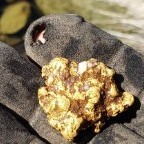
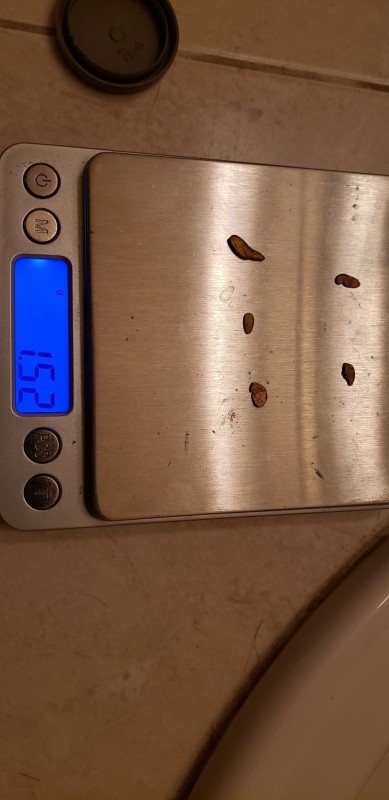

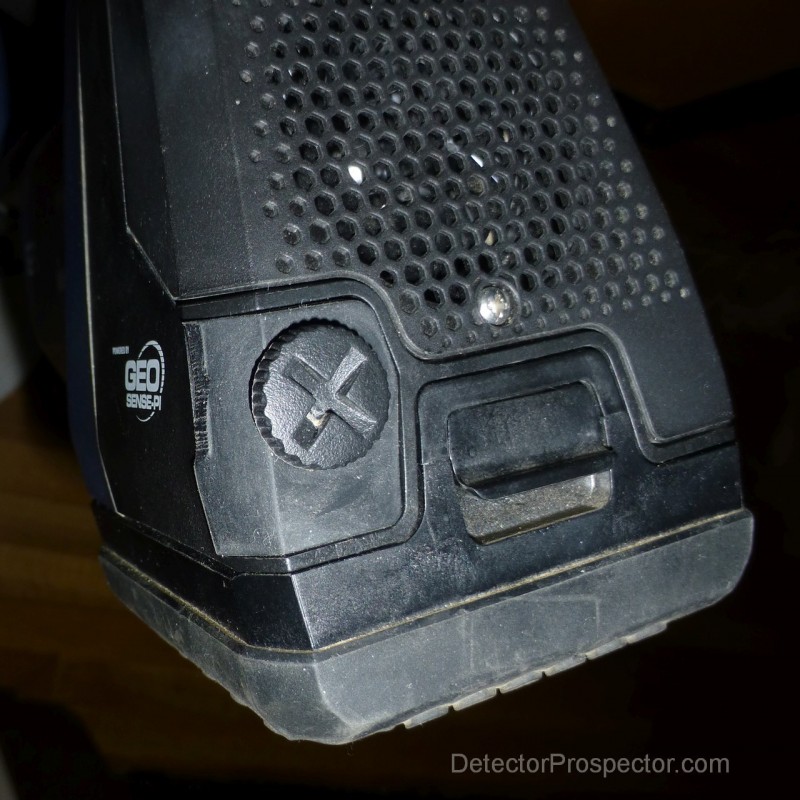

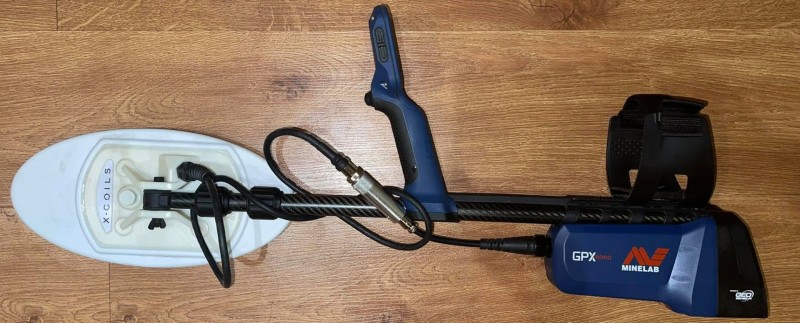
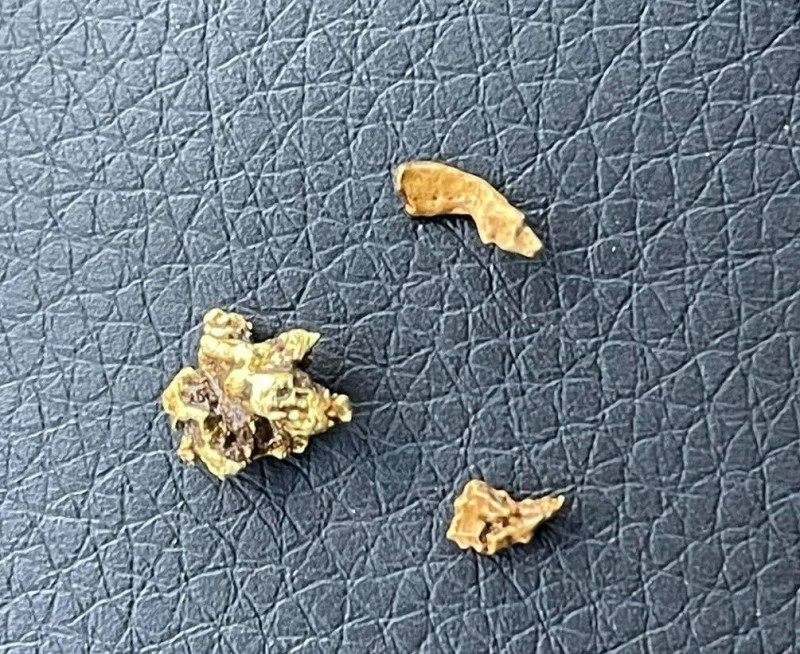
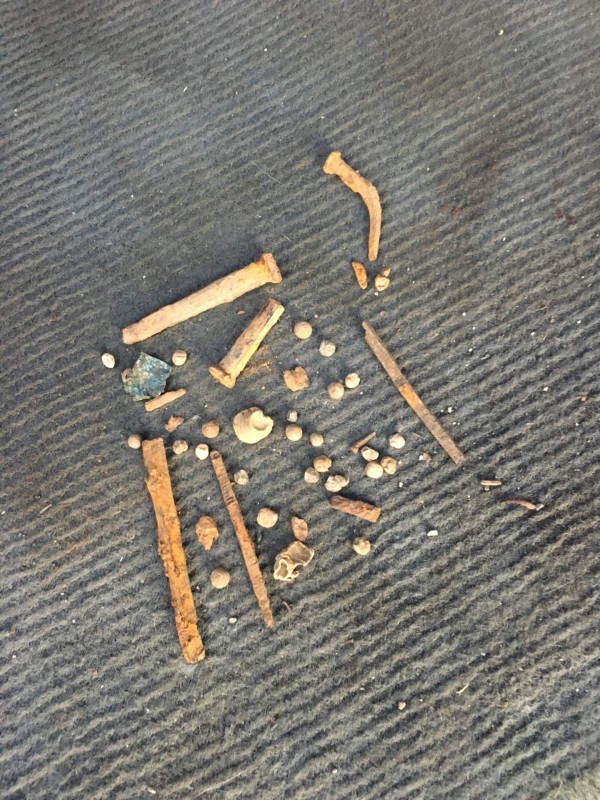
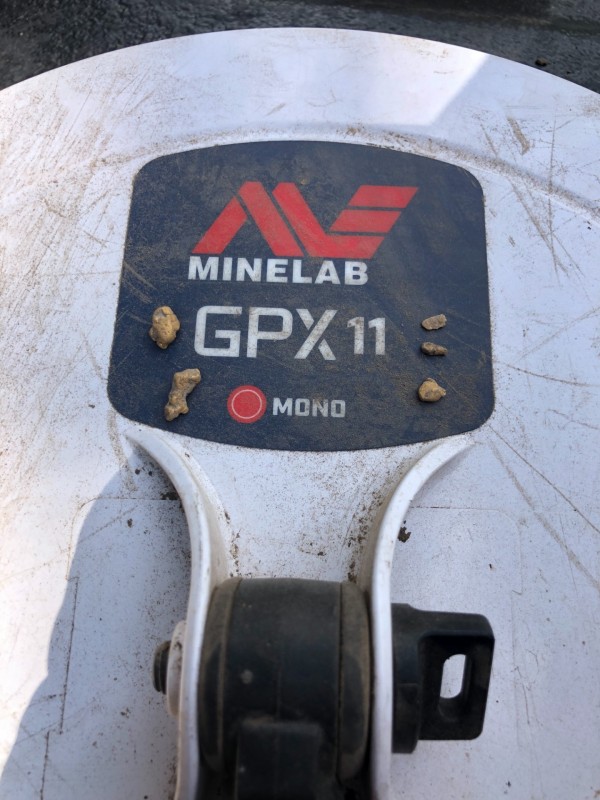
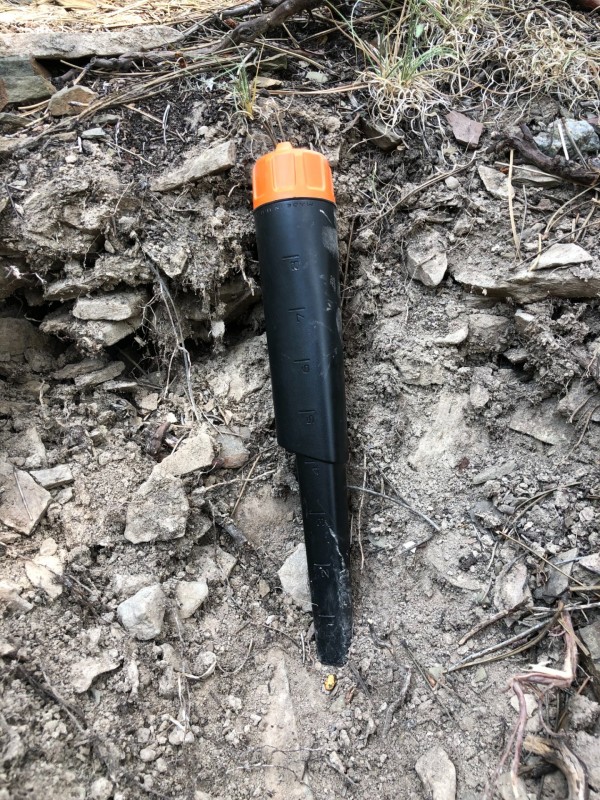
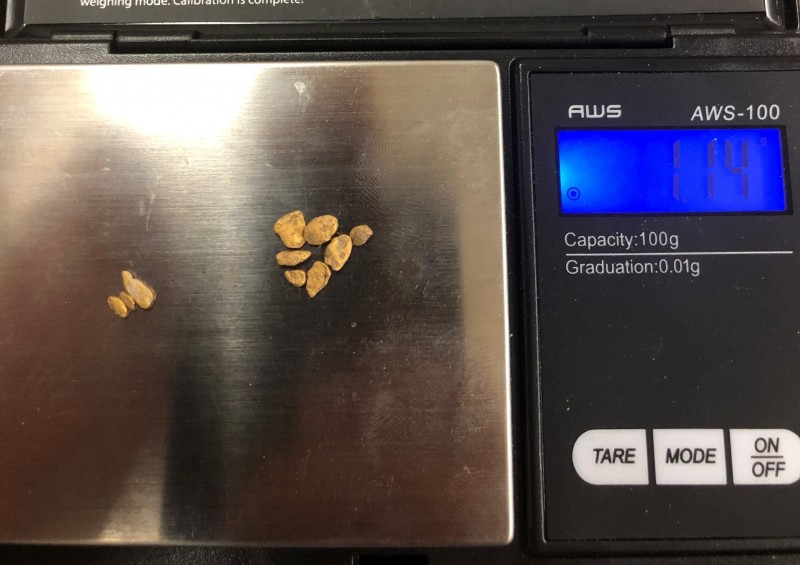
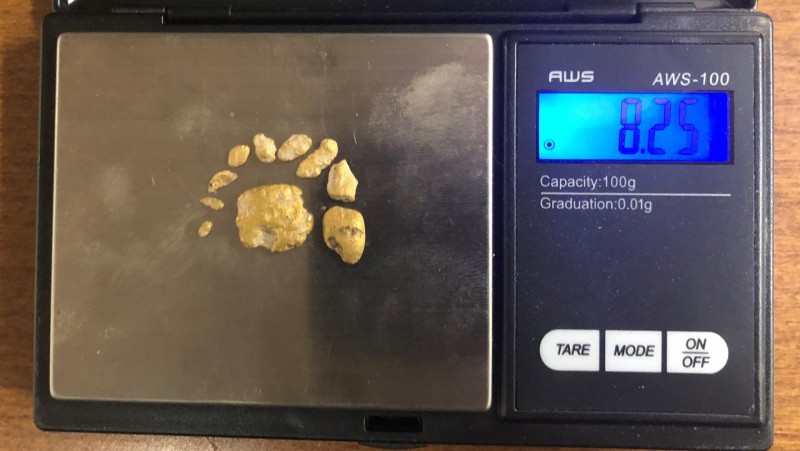
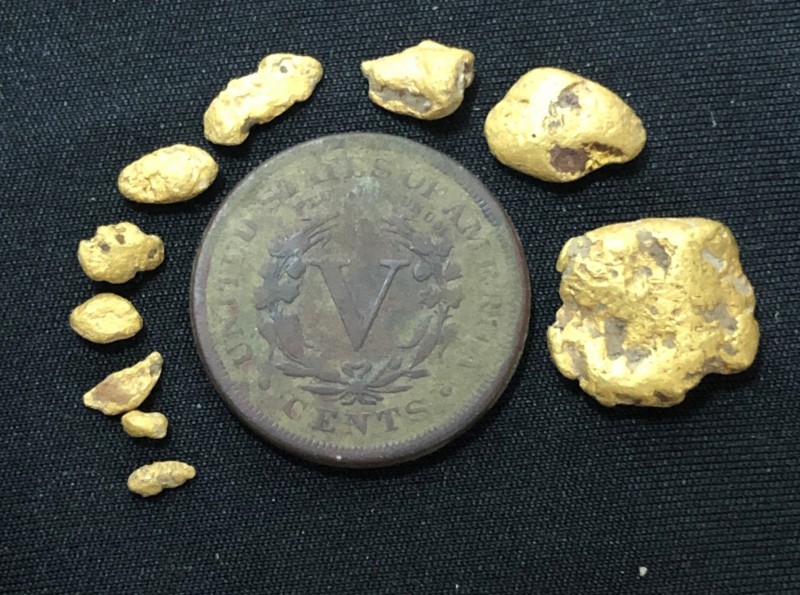
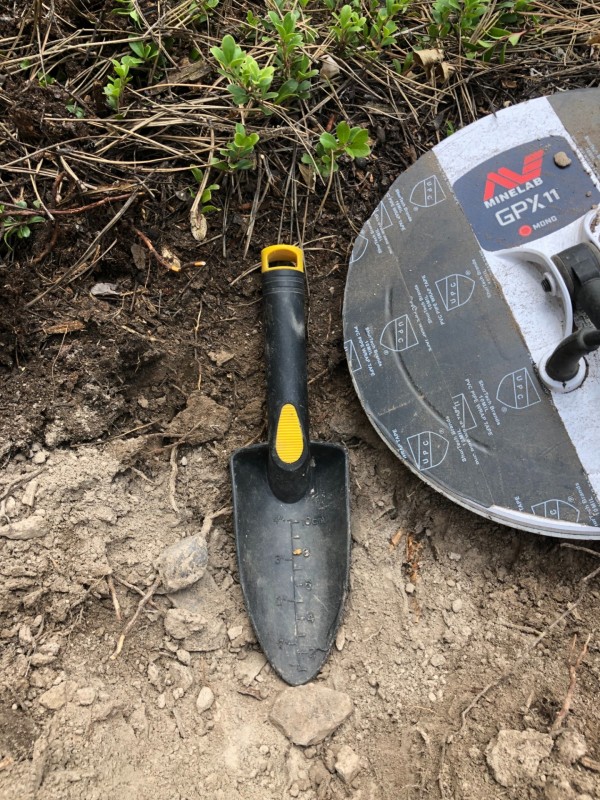
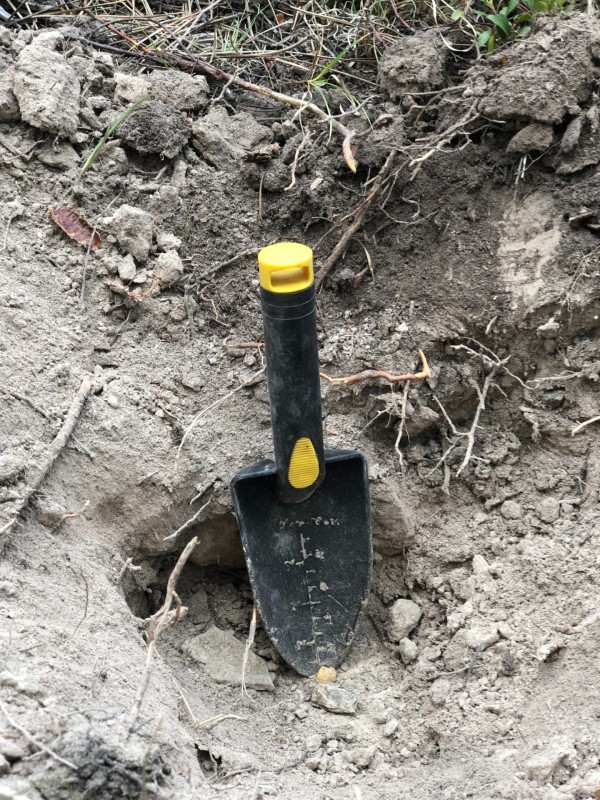
.thumb.jpg.77e4cb5bf39d44bdd2050d2edb7dfdb1.jpg)

